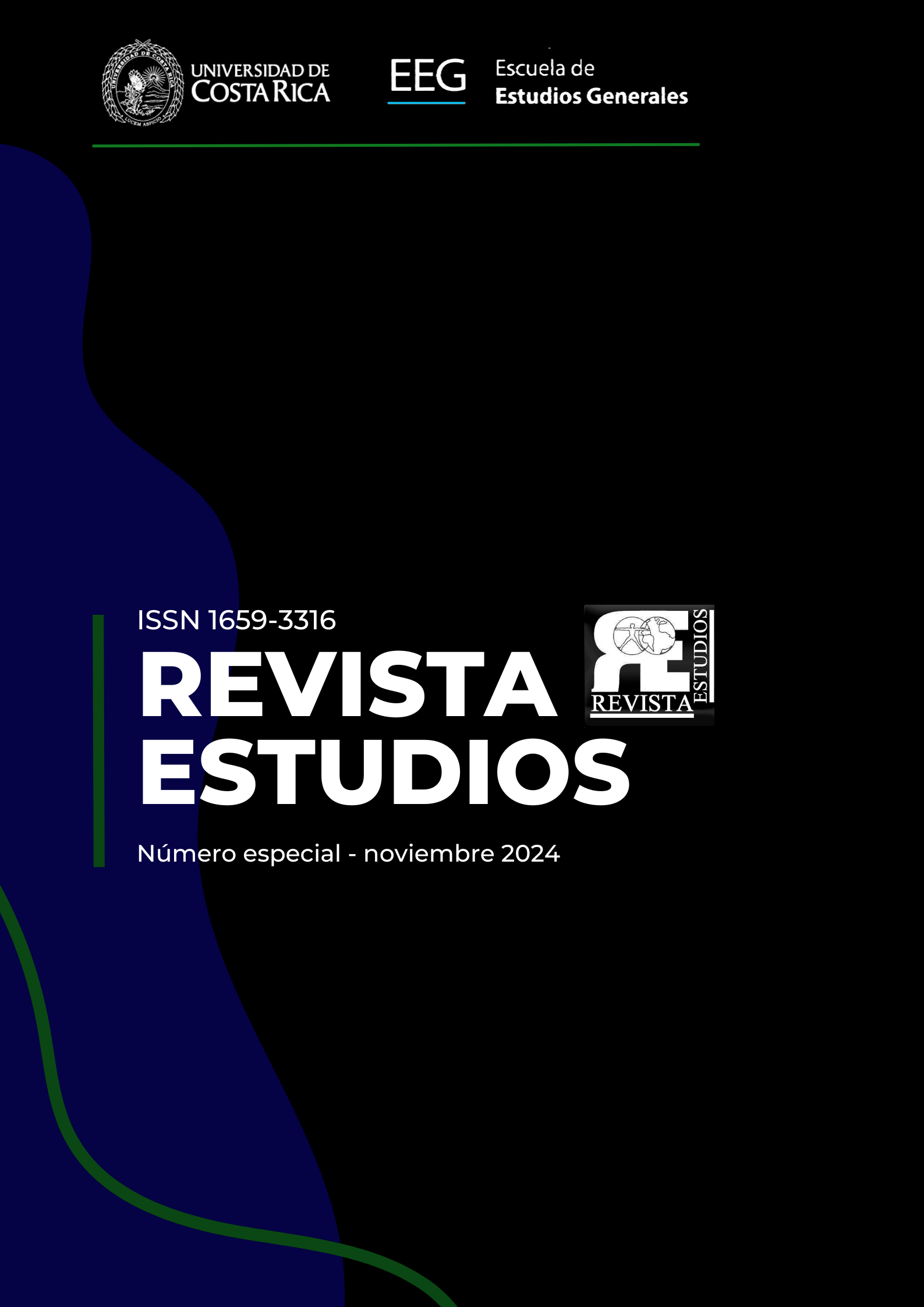Abstract
This article aims to analyze the ethical dilemmas presented by artificial intelligence in contemporary society within late capitalism in its algorithmic phase. Through an interdisciplinary methodological proposal and a critical approach based on categories such as administered society and the notion of psychotechnics (both of Adornoian origin), repositioning its relevance in the digital atmosphere, as well as ethical perspectives. Furthermore, specialized bibliographic sources are examined to understand how technological expansion coexists with the deterioration of cognitive functions in digital natives. This paper also explores the role of artificial intelligence in strengthening hyperconnected criminal activities and the challenges this implies for justice. Additionally, the effect of cognitive minimalism in interface design and user experiences on social networks like TikTok is addressed, concluding that a critical ethical analysis is indispensable to balance technological innovation with the protection of human rights and justice.
References
Adorno, T. W. (1954). How to Look at Television. The Quarterly of Film Radio and Television, 8(3), 213–235. https://doi.org/10.2307/1209731
Adorno, T. W. (2001a). Sobre la objetividad en ciencias sociales. En Theodor W: Adorno, Epistemología y ciencias sociales (pp. 37-43). Cátedra.
Adorno, T. W. (2001b). Mínima Moralia. Reflexiones desde la vida dañada. Taurus.
Adorno, T. W. (2021). Rasgos del nuevo radicalismo de derecha. Buenos Aires: Taurus.
Adorno, T.W. & Horkheimer, M. (1969). Dialéctica del Iluminismo. Sur.
Aggarwal N., Floridi, L., King, T., & Taddeo, M. (2019). Artificial Intelligence Crime: An Interdisciplinary Analysis of Foreseeable Threats and Solutions. Science and Engineering Ethics, 95.
Almeida, D., Lomas, E. & Shmarko, K. (2022). The ethics of facial recognition technologies, surveillance, and accountability in an age of artificial intelligence: a comparative analysis of US, EU, and UK regulatory frameworks. AI and Ethics, 2 (3), 377-387. https://doi.org/10.1007/s43681-021-00077-w
Arcos Díez, J. (2021). Caso de estudio: entender al usuario de TikTok: personalidad y comportamiento de consumo [Tesis de grado en Publicidad y Relaciones Públicas, Universidad de Valladolid]. Repositorio de la Universidad de Valladolid. https://uvadoc.uva.es/handle/10324/48099
Ballesteros, C. (2020) La propagación digital del coronavirus: Midiendo el engagement del entretenimiento en la red social emergente TikTok. Revista Española de comunicación en salud (1), 171-185. https://doi.org/10.20318/recs.2020.5459
Barnett, J., Brown, D., Bud, A., Fenoglio, E., Kerrigan, C., Koshiyama, A., Sfeir-Tait, S., & Treleaven, P. (2023). The future of cybercrime: AI and emerging technologies are creating a cybercrime tsunami. Social Science Research Network. https://doi.org/10.2139/ssrn.4507244
Comisión Europea. (2021). Propuesta de Reglamento del Parlamento Europeo y del Consejo que establece normas armonizadas en materia de inteligencia artificial. EUR-Lex. https://eur-lex.europa.eu/legal-content/PT/TXT/HTML/?uri=CELEX:52021PC0206&from=EN
D’Ancona, M. (2017) Post-Truth. The new war on Truth and How to fight back. Ebury Press.
Desmurguet, M. (2020). La fábrica de cretinos digitales: Los peligros de las pantallas para nuestros hijos. Península.
Duffy, B.E. & Pooley, J. (28 de julio, 2017). Idols of Promotion: The Triumph of Self-Branding in the social media age. SM’17 Society. Proceedings of the 8th International Conference on Social Media & Society, (53), 1-5. http://dx.doi.org/10.1145/3097286.3097339
Estévez, E. C., Fillottrani, P., & Linares, S. (2020). Prometea: Transformando la administración de justicia con herramientas de inteligencia artificial. Banco Interamericano de Desarrollo. https://doi.org/10.18235/0002378
Fortim, I. (2013) Aspectos psicológicos do uso patológico de internet [Tesis Doctoral en Psicología, Pontificia Universidade de São Paulo]. https://repositorio.pucsp.br/jspui/handle/handle/15253
González Pulido, I. (2023). El uso de la inteligencia artificial generativa en la investigación de la ciberdelincuencia de género: ante el auge de los deepfakes. IUS ET SCIENTIA, 9 (2), 157–180. https://doi.org/10.12795/IESTSCIENTIA.2023.i02.08
Guerrero-Márquez, L. (2022). Sesgo de confirmación y fake news [Tesis de grado en Piscología, Universidad de Jaén]. https://crea.ujaen.es/handle/10953.1/17222
Hoekman, R. (2007). Designing the obvious: A common sense approach to Web & Mobile Application Design. New Raiders.
Kosík, K. (1967) Dialéctica de lo concreto. Estudio sobre los problemas del hombre y del mundo. Grijalbo.
Krug, S. (2014). Don’t Make Me Think, Revisited. A Common Sense Approach to Web Usability. New Raiders.
Kant, I. (1996). Fundamentación de la metafísica de las costumbres. Ariel.
Kant, I. (2000). Respuesta a la pregunta: ¿Qué es Ilustración? En I. Kant. Crítica de la razón pura ¿Qué es la ilustración? (pp. 63-70) Publicacions de la Univesitat de València.
March, E. (2022). Psychopathy: Cybercrime and cyber abuse. En Barbosa, P., Paulino, M. & Alho, P. (Eds.) Psychopathy and Criminal Behavior (pp. 423-444), Academic Press. https://doi.org/10.1016/B978-0-12-811419-3.00015-7
Martínez-Rolán, X., Sierra, J., & Ring Carlson, C. (2024). Discursos de odio, populismo digital y autoritarismos en red. Revista Latina De Comunicación Social, (82). https://nuevaepoca.revistalatinacs.org/index.php/revista/article/view/2298
McCarthy, J., Minsky, M. L., Rochester, N., & Shannon, C. E. (2006). A Proposal for the Dartmouth Summer Research Project on Artificial Intelligence, August 31, 1955. AI Magazine, 27(4), 12-14. https://doi.org/10.1609/aimag.v27i4.1904
Miyake, N. P., Otake-Matsuura, M., Pennefather, P. & Seaborn, K. (2021). Voice in Human-Agent Interaction: A Survey. ACM Computing Surveys (CSUR), 54 (4), 1-43. https://doi.org/10.1145/3386867
Nica, C. & Tănase, T. (junio, 2020). Using weaponized machine learning in cyber offensive operations. International Conference Knowledge-based Organization, 26 (1), 94-99. https://doi.org/10.2478/kbo-2020-0014
Parezanović, M. & Proroković, D. (2023). Artificial Intelligence and psychological – propaganda operations in the context of threat to national security. The Policy of National Security, 25 (2), 13-32. https://doi.org/10.5937/pnb25-46741
Roff, H. & Moyes, R. (abril, 2016). Meaningful Human Control, Artificial Intelligence and Autonomous Weapons. Article36. Briefing paper prepared for the Informal Meeting of Experts on Lethal Autonomous Weapons Systems, UN Convention on Certain Conventional Weapons. https://article36.org/wp-content/uploads/2016/04/MHC-AI-and-AWS-FINAL.pdf
Sánchez, W. (2011). La usabilidad en Ingeniería de Software: definición y características. Ing-Novación, (2), 7-22. https://rd.udb.edu.sv/items/8da93e08-039b-41ac-8ac3-c0ed2c355def
Shah, N., Bhagat, N. & Shah, M. (2021). Crime forecasting: a machine learning and computer vision approach to crime prediction and prevention. Visual Computing for Industry, Biomedicine, and Art, 4 (1), 9. https://doi.org/10.1186/s42492-021-00075-z
Seigfried-Spellar, K., Villacís-Vukadinović, N. & Lynam, D. (2017). Computer criminal behavior is related to psychopathy and other antisocial. Journal of Criminal Justice, 51, 67–73. http://dx.doi.org/10.1016/j.jcrimjus.2017.06.003
Sutton, R. (15 de marzo de 2023). The Bitter Lesson. http://www.incompleteideas.net/IncIdeas/BitterLesson.html
Wood, D. (2014) Interface design: an introduction to visual communication in UI design. Bloomsbury Publishing.
##plugins.facebook.comentarios##

This work is licensed under a Creative Commons Attribution-NonCommercial-ShareAlike 4.0 International License.
Copyright (c) 2024 Fabrizio Fallas-Vargas, Carlos Morales Castro


